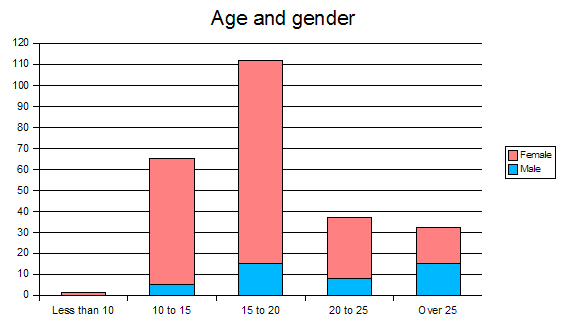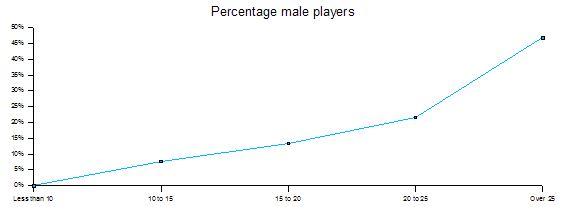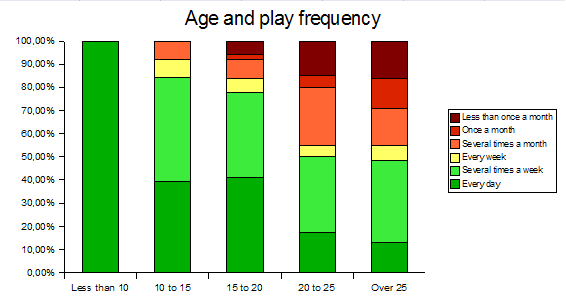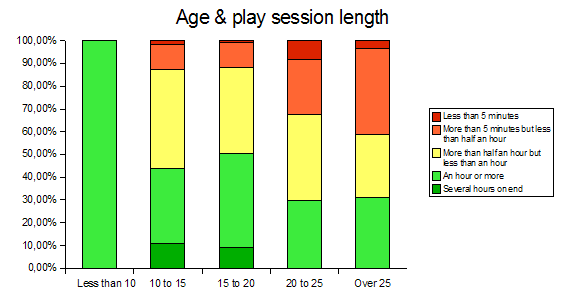
Dan Witz: Natasha (2007 18×14″)
Lovely.
Nice to be reminded of the potential for beauty in our ugly modern times. I need that once in a while.
There’s more where that came from.



via Suzanne G.
Archive of our old blog (2005-2010)

Dan Witz: Natasha (2007 18×14″)
Lovely.
Nice to be reminded of the potential for beauty in our ugly modern times. I need that once in a while.
There’s more where that came from.



via Suzanne G.
We have finished Carmen, the second character that you will be able to play in The Path. There’s six in total: the Red Girls. Robin was the first to be revealed. And now we see one of the older sisters: Carmen.
Seventeen. A glorious age for a girl. Having left her childhood body behind, she enjoys parading the new Carmen. She is fully aware of the heads that turn when she passes by. She’ll give them a little bit extra to look at too. A shake of the hips. A wink of the eye. But no more.
Carmen may fancy herself a femme fatale. But inside she knows that all she wants is a little bit of attention. From a strong, warm and handsome man, perhaps. Who can keep her safe. Hold her tight. With a strength that approaches violence. He doesn’t need to be as wild as she is, but it wouldn’t hurt.
There’s new pictures on the homepage, portraits in the gallery and a new wallpaper for your desktop.
Just like Robin, Carmen is keeping a journal where she will be talking about her life as a young woman. A life that just got interesting. A life that is about to end.
We are also posting pictures of the “making of” process of Carmen on the development blog.
Michael Abbott reports on an interesting observation, illustrating something that we’ve been saying around here for years. That games, basically, are a terrible waste of a perfectly fine medium.
Talking about trying to get his non-gamer friends to play Braid, he says:
The tragic thing is they want to play. The music, the visuals, the opening text – all hook them and pique their curiosities. They didn’t know games aspire to explore the human psyche. They didn’t know games can look like paintings. They didn’t know game music can feature a cello. Braid invites them in, and they willingly enter. Then, just as quickly, Braid boots them out and slams the door in their faces. They discover that the game is as inaccessible to them as an unknown foreign language.
Back in 2005 when we released the first phase of The Endless Forest, the idea of the fair sex playing videogames was strange and fascinating. So much so, that we made it a high priority at Tale of Tales to make games that would attract males and females in equal amounts. After running our little mmo for almost 3 years, we have done a survey that perhaps demonstrates that we may have exaggerated a little bit.
We have organized this survey together with PhD student Eva Kekou and we’re only expecting official results in the Fall. But we’d like to share some things that are abundantly clear without scientific investigation.
Of the over 30 thousand registered members, almost 250 have taken the survey. That’s less than 1 percent. So a grain of salt is in order. Also because some of the participants have expressed enjoying taking the survey. So perhaps the results only represent Endless Forest players who like filling in surveys.
We knew that a lot of women and girls are playing The Endless Forest but the bare figures did come as a bit of a shock to us: only 41 of the 247 participants who answered the gender question in the survey are male. That’s less than 1 in 5. I’m not sure if we should feel proud or embarrassed.
The following graph shows how the participants are divided per age group.

So the majority of players are teenagers. At least those who filled in the survey. Something interesting happens with the gender balance as players get older, though.

As players get older, the gender becomes more balanced. In the age group of over 25, there’s almost an equal amount of men and women.
We always thought that The Endless Forest was a casual experience, in the strict sense of the word. Something you do leisurely, just once in a while. But that was probably because we were only thinking of adult players. As the next graphs show, teenagers spend a lot more time in the Forest.

The one child of under 10 who particpated in the survey, apparently plays the game every day. The older the players get, the less frequently they play.

Something similar shows up in the data concerning the time of an average play session. Some teenagers play The Endless Forest for several hours on end. I find that quite astonishing, and slightly worrying. Most play around an hour. As players get older, the sessions get shorter.
We also asked whether participants played other games than The Endless Forest. Most of them do (almost 90%). The games that were mentioned most were games in which your avatar is also an animal: Okami and Wolf Quest. The Sims and Zelda games scored pretty well as well, followed by World of Warcraft, Zoo Tycoon, Pokemon, Final Fantasy and, believe or not, Halo (almost 5%).
Another thing that caught our eye was how many of the participants had first learned about The Endless Forest through fan art on Deviant Art: 1 in 5 players! Followed closely by word of mouth (friends and family: 16%). Google searches came up third (almost 10%), followed by the community around the Wolf Quest game.
With the relentless creativity displayed by the players on The Endless Forest community site, it should come as as no surprise that over 90% of the players considers themselves to be creative, an artist or designer (either professional or hobbyist). And many of them participate in other forms of culture (mostly music and books, but also comics and cinema, and fewer visit concerts or theater).
Overall, we’re very suspicious of surveys and statistics. So we’re not taking this too seriously. But it’s an interesting indicator. I wish we could interest more boys and men in our games. But I don’t think we’ll add any guns and sports for that purpose. Maybe we should just admit that we make games for girls. I don’t see other developers being embarassed about making games for boys. 😉
![]()
The Graveyard was not made entirely by Auriea and I alone. We had some great help from some very talented people. One of these is Gerry De Mol who composed, played, sung and arranged the song “Komen te gaan” especially for the game. Gerry is a multi-talented artist -writer, composer and musician- with a broad musical knowledge and know-how. Before working with him on The Graveyard, he had made the music for The Endless Forest as well.
We had a talk with him about working with us on The Graveyard, we analyze the lyrics of the song and learn about some of the many other projects that he is working on in
The Path will feature six playable characters. Each represents Little Red Ridinghood in some way. They are sisters. We call them the Red Girls. Over the course of the following months we will be revealing each of them, as we finalize their textures. The first in this fortnightly series is Robin.
Robin is about nine years old. A very lively child. She loves playing in the forest. Only on the path, of course. Mother tells her to never go into the woods. She never says why. Robin thinks there may by fun things to play with in the forest. She sometimes hears the creaking sounds of what seems to be a swing! Or the howl of a wolf in the distance! Robin likes wolves. They are her favourite kind of animal!
Of course it will all end in tears.
While we are continuing production, Robin will be sharing the remainder of her young life in her very own Livejournal.
In the meantime check out the pretty new pictures in the gallery and download the brand new Robin desktop wallpaper! And if you’re really curious, take a peak at the development blog.
Eskil Steenberg, currently hard at work on a very pretty new MMO called “Love“, made an insightful comment on the tendency in contemporary game design to replace gameplay with more or less elaborate PAUSE and PLAY buttons.
I’ve recently played some MGS4 and GTAIV, and it is clear they are filled with press button to proceed, use item to proceed, honk the horn to proceed, or simply just follow the line on your map. GTAIV feels at times like a pac-man, except you don’t have to make any choices where to go.
It is clear after playing these games that what the designers really wanted to do was not a game but a movie, the interactivity is just a annoyance on the way. As someone who is also into film making I can understand this, but the problem is that it is ruining the game. Even with film aspirations, they don’t have even the basic film 101 knowledge down like pacing, avoiding exposition, to show rather then tell, tension leading to resolution, building up an event or character before not after they appear, and giving the viewer a fair chance to figure out the resolution before hand.
Reminds me of our realisation some time ago that game design was still largely considered a problem that needs to be solved rather than an opportunity that can be exploited. Rather than looking at the medium with a clear head and then figuring out what to do with it, many game developers come to the medium with the preconceived ideas and then they force the design to cater to these ideas. Even if the medium doesn’t lend itself to them very well. Even if the medium may be capable of much more interesting and spectacular things that are completely unthinkable in any other medium.
There’s two kinds of playing. There’s the competitive kind and there’s the whimsical kind.
Competitive play sets up certain boundaries and a goal to achieve. It can be done against other people or against oneself. The point of competitive play is to attempt to win, i.e. to reach the predefined goal. Sports is an example of competitive play.
Whimsical play is free-form. It involves non-productive activities that we do merely to amuse ourselves. Sometimes whimsical play is done with other people, sometimes alone. But the form of playing can change at any moment. Any rules that might occur are temporary or optional. Sex is an example of whimsical play.
Competitive play in essence is also non-productive. But through rules and goals, it creates a sensation of purpose. Whimsical play is always pointless. It is purely recreational and makes no excuses for itself.
Why is it that we see so much competitive play in video games and so little whimsical play?
Is it because rulesets are so compatible with the way in which a computer works? Is it because we want the illusion of productivity since computers are supposed to be machines for work, not play? Or is it simply because we have lost the ability to enjoy the moment, to play for playing’s sake?
Competitive computer games are often used for whimsical play. When players start hacking or modifying the game, when they start testing the game’s limits, when they do things in the game that are irrelevant to achieving the pre-defined goal. While many contemporary games allow this kind of activity and some even encourage it, very few games are actually built around this form of play. And since they are not, whimsical play in competitive games is almost always disruptive. It destroys the intent of the designer, the narrative of the game and the overall atmosphere.
The only computer game designed for whimsical play that I can think of at the moment is The Endless Forest. Can anyone think of any others?